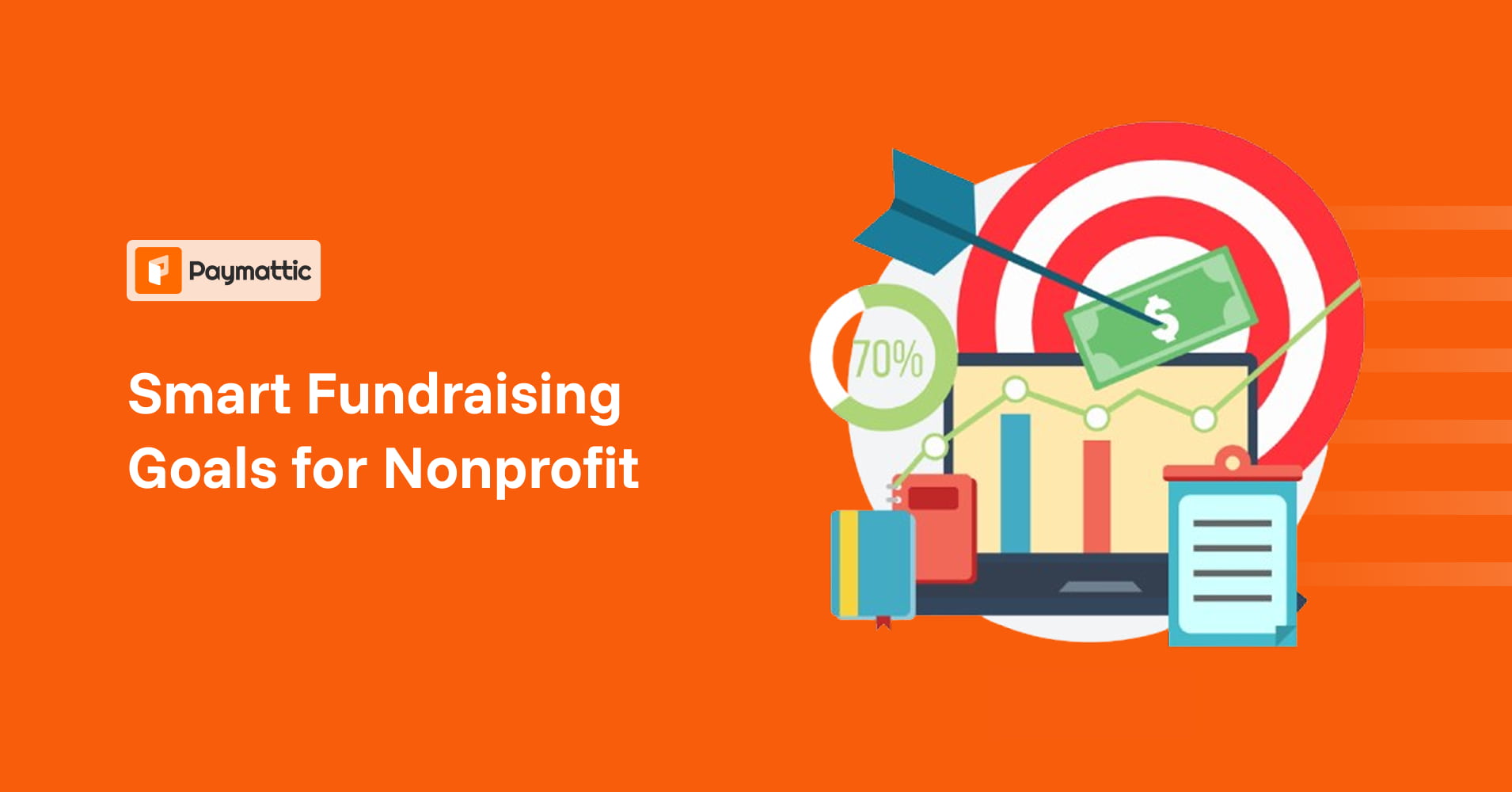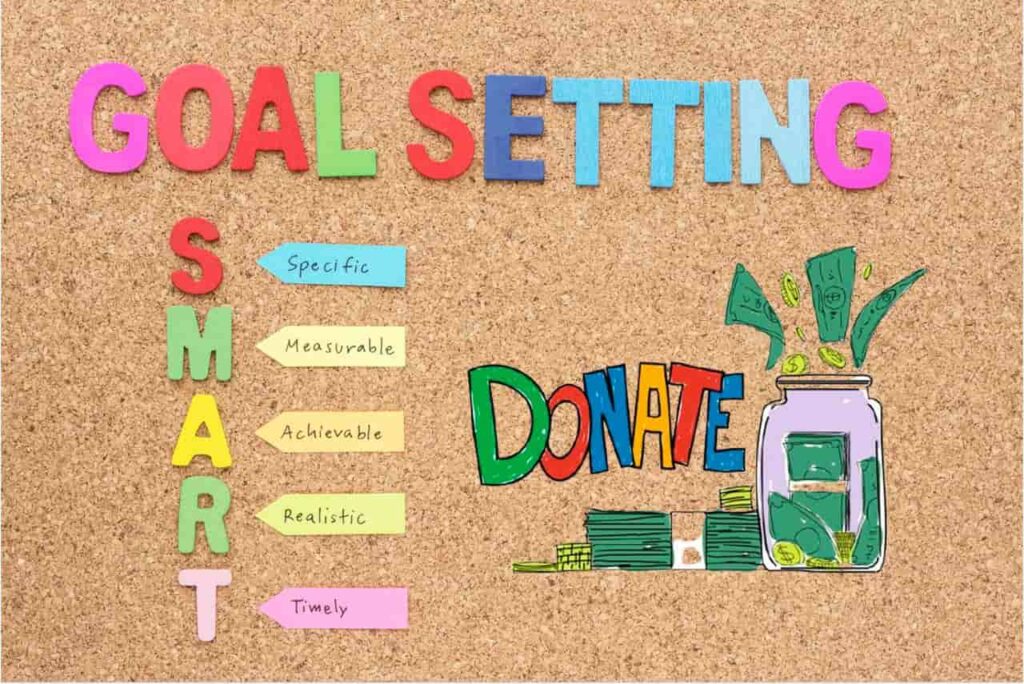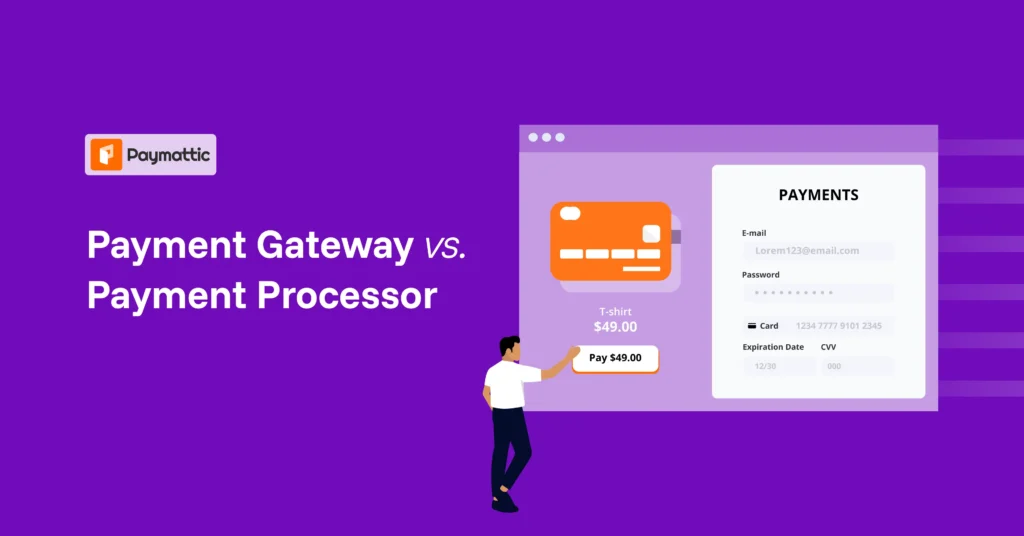
8 Min Read
Smart Fundraising Goals: A Nonprofit’s Guide to Increasing Donations
Table of Content
Download Paymattic – it’s Free!

Subscribe To Get
WordPress Guides, Tips, and Tutorials
We will never spam you. We will only send you product updates and tips.
Nonprofits largely depend on donations to complete their regular activities.
However, the saddest truth is that these organizations are struggling to meet their fundraising targets. It’s frustrating, especially when your programs depend on that funding.
The reason behind this failure is not always a lack of effort; it can also be unclear fundraising goals. Because, when you don’t know exactly what you’re aiming for, everything becomes harder.
Here, smart fundraising goals can turn your failure into success. These goals make it clear to the organizers what to do to achieve the target, and supporters also know in which cause they are investing.
If you are a nonprofit organizer, looking to set fundraising goals for your donation campaigns, this blog is for you. In this blog, we’ll talk about how to set goals that actually help you raise more funds.
What makes a fundraising goal “SMART”?

Every nonprofit has a specific goal, and they are working towards achieving this. However, here, the most important thing is setting a goal that actually works. That’s where the smart framework comes in.
SMART fundraising goals are Specific, Measurable, Achievable, Relevant, and Time-bound. This proven methodology transforms vague donation targets into clear action plans.
Specific: Your goal needs to be crystal clear. Volunteers should know your specific fundraising objectives. Because when they know the target, it becomes easier for them to create a targeted strategy. Instead of saying “we want to raise more money,” say “we want to raise $50,000 for our youth mentorship program.”
Measurable: Organized goals let you monitor your campaign performance in real-time and adjust your fundraising strategies as needed. Set specific amounts as your fundraising target, define how many new donors you need to acquire, or establish retention rates you want to achieve.
Achievable: An unrealistic fundraising goal demoralizes your team and makes donors question your credibility. Set a plan that is achievable for your team members. Share your fundraising data with the team and set targets that are needed to reach the targeted goal.
Relevant: Every fundraising goal should directly support your nonprofit’s mission and organizational priorities. If you’re an environmental organization, your campaign goals should align with your conservation programs. Your fundraising efforts need to resonate with your donor community and advance your cause.
Time-bound: Deadlines create urgency. Whether it’s a year-end giving campaign, a quarterly revenue goal, or a capital campaign spanning several years, your fundraising timeline keeps everyone accountable. Time-bound goals help you pace your fundraising activities and create natural checkpoints for evaluation.
Perhaps most importantly, goals let you measure success and identify areas for improvement. Also, create accountability and provide valuable data for future planning.
Different types of fundraising goals you should try
Alright, so you know what makes a good donation goal. Now, let’s talk about the different kinds you should actually be setting. Each type serves a purpose.
Revenue goals

Revenue goals are the bread and butter of your morning breakfast, which you can’t ignore. This goal includes the annual targeted amount you need to raise to run your organization’s programs and operations.
Along with the annual plan, you can also set quarterly revenue goals for consistent income throughout the year. Many nonprofits experience donation spikes during the year-end giving season and struggle during the middle of the year. Quarterly targets help you plan strategic campaigns year-round and avoid cash flow problems.
Want to create a buisness plan for your nonprofit? Click here to get the full guide.
Donor acquisition goals
Donor acquisition goal is the most important fundraising goal for any charity organization. Growing a donor base is essential for the long-term sustainability of a charitable organization. This goal focuses on bringing new supporters into your nonprofit community.
As an organizer, first you’ve to set specific targets for new donor acquisition. For example, you can aim to acquire 200 new donors within one year. While planning for donors, consider the acquisition cost too, and check whether your initial cost for finding them can be recouped through their donation.
Donor retention goals
It’s not possible to acquire new donors every time you launch fundraising campaigns. In that case, keeping existing donors is more cost-effective than finding new ones. It’s not easy to retain existing donors, and most nonprofits are struggling with that, almost 40-50% of donors they lost each year.
Setting strong donor retention strategies can dramatically improve your fundraising results. First, calculate your current retention rate, then work for improvement. For example, if you’re currently retaining 55% of donors, you can aim for 60% or 65%. Even small improvements in retention compound over time, significantly increasing your lifetime donor value.
Upgrade goals
After acquiring and retaining donors, it’s time to motivate them to increase their donation amounts or giving frequency. To do that, use one of the most effective methods, displaying a donation progress bar on your fundraising website.
Donation progress bar raises a friendly competition in the supporters’ minds and motivates them to donate to your cause. Because it provides a real-time overview of how each contribution helps move forward to reach the goals. Use a donation plugin to display a fundraising progress bar on your nonprofit websites.
Here is a demo of a donation form, with a donation progress bar, created with Paymattic.
Engagement goals
Raising funds is not the only goal of your organization. You also have to engage your supporters to participate organization’s activities. Engagement goals measure how your supporters interact with your organization beyond donations.
Strong engagement builds long-term relationships that eventually result in increased giving. Because when supporters feel they are actively engaged with the cause, they will feel more motivated to increase their giving.
Social media engagement goals help expand your charity work’s visibility. Mention potential supporters, post appreciation posts, and reach them. Send them the upcoming fundraising plan, and ask them to join to make the event successful.
Campaign-specific goals
Different fundraising campaigns require unique objectives. Your year-end giving campaign has different targets than your spring peer-to-peer fundraising event. Setting campaign-specific goals helps you evaluate what’s working and refine your fundraising calendar.
Event fundraising goals should consider ticket sales, sponsorship revenue, auction proceeds, and direct donations received during the event. Factor in your event expenses to ensure you’re setting net revenue targets that make the investment worthwhile.
Legacy giving goals
Planned giving and legacy donations represent some of the largest gifts nonprofits receive, yet many organizations don’t actively pursue these opportunities. Setting legacy giving goals encourages you to build a program that secures your organization’s future.
Corporate partnership goals

Corporate giving and business sponsorships offer significant revenue opportunities. Setting corporate partnership goals helps you build relationships with companies that share your values and want to demonstrate corporate social responsibility.
Grant goals
Most of the nonprofit’s activities are completely run with grants from governmental and private organizations. Setting grant goals helps you maintain a robust grant pipeline and diversify your funding sources.
Click here to discover “15 Leading Companies that Donate to Nonprofits”
Subscribe Newsletter
Subscribe to our newsletter for updates, exclusive offers, and news you won’t miss!

Pro tips to hit your fundraising goal
Setting goals is just the beginning. It doesn’t like that, you just set a donation goal and everything happens in a blink. Actually achieving your fundraising targets requires strategy, persistence, and smart execution. Here are some proven tips to help your nonprofit reach its fundraising goals.
- Break down your annual goal into manageable chunks
- Use data from past campaigns to inform your targets.
- Create accountability through team buy-in.
- Segment your donor base for targeted strategies.
- Invest in donor stewardship throughout the year.
- Leverage matching gifts to accelerate progress.
- Diversify your fundraising channels
- Track your progress visually and publicly.
- Adjust your strategy based on real-time results.
- Celebrate milestones along the way.
- Build urgency into your campaigns.
- Optimize your donation process.
- Communicate impact clearly and consistently.
- Engage your board members in fundraising.
- Focus on donor retention alongside acquisition.
- Time your appeals strategically.
Raise funds online with Paymattic
Paymattic is a powerful WordPress payment & donation plugin that simplifies online payments, donations, and subscriptions in one place.
With support for Stripe, PayPal, offline payments, subscriptions, multi-currency, donation progress bar, donor dashboard, and detailed reporting, it’s your all-in-one solution for collecting payments, managing donations, and growing your business with ease.
- 13+ global payment gateways covering the whole world.
- Supports 157+ currencies.
- Supports both one-time and recurring payments.
- Offers a detailed customer dashboard to manage subscriptions.
- Offers a detailed report dashboard.
- Integrates with 15 major tools.
- Offers a smooth payment/donation form builder with 35+ custom input fields.
- PCI-DSS compliant and built with security best practices.
- Advanced fraud protection with Honeypot, ReCAPTCHA V2 and V3, and Cloudflare Turnstile.
- Offers webhooks, filters, and a REST API for custom development.
Increase donations with smart fundraising goals
Fundraising goals matter for any nonprofit, as it determine the ability of an organization to create meaningful change. When you set SMART fundraising goals that are specific, measurable, achievable, relevant, and time-bound, you give your organization a clear path forward.
Along with the funding security, these donation goals help to unite your team, inspire your donors, and ensure every fundraising effort contributes to your mission.
Hope this guide may help you craft smart fundraising goals. If you have any further queries, feel free to ask.
Join the thousands already enjoying Paymattic Pro!











Leave a Reply